|
Books
UNDER CONSTRUCTION
English books
  |
The samurai sword - John
M. Yumoto
Explores the origins and
development of the famous samurai sword as a work of art and a weapon
and discusses its identification, evaluation, and care.
|
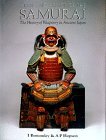  |
Arms & Armour of
the Samurai - Ian Bottomley, A.P. Hopson
|
  |
Japanese
Swords - Nobuo Ogasawara |
  |
The Japanese Sword - A
Comprehensive Guide - Kanzan Sato
One of the foremost
experts on the Japanese sword describes their history and appreciations
in this book, with photographs and illustrations.
|
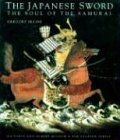  |
The Japanese Sword: The
Soul of the Samurai - Gregory Irvine
Drawing on the
V&A's magnificent collection, this illustrated survey examines
the development of the Japanese sword in an historical and social
context from the 8th to the 12th century. The development of the sword
from its origins as one of the world's most effective weapons
in seen in the context of the emergence and development of Japan's
ruling military class, the samurai, to whom it was indispensable both
as a weapon and symbol of power. The book also deals with the
techniques used in the making of the sword and the associated
terminology. In addition to weapons from the V&A's own
collections, illustrations include comparative materials from Japan's
Tokyo National Museum, as well as prints showing graphic depictions of
swords in action.
|
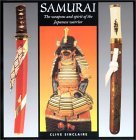  |
Samurai:
The Weapons and Spirit of the Japanese Warrior |
  |
The Connisseurs Book of
japanese Swords - Kokan Nagayama
A comprehensive guide to
the appreciation and appraisal of Japanese swords, complete with
historical background, terms and the workmanship of the foremost
schools and smiths.
|
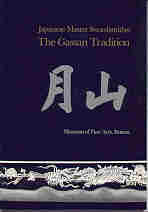  |
The
Gassan Tradition - Museum of Fine Arts, Boston
The Gassan school, believed active since the Kamakura period
(1185-1333), continues to produce blades to this day. This
important English-language text presents a detailed account of Gassan
Sadaichi's 1988 Boston blade along with a thorough history of the
Gassan-kaji - known for it's ayasugi hada. Includes many
photos and top-quality oshigata of both the Ningen Kokuho (living
national treasure['s]) masterworks and earlier blades by this
influential school.
85 pgs., 8¼ x 115/8" soft cover |
  |
Japanese
Military and Civil Swords and Dirks - Richard Fuller, Ron Gregory
This book contains
majority of Japanese
military swords from
Kyu-gunto (Western sword
mounting influenced), Shin-gunto
(army mouting), Kai-gunto
(Navy mounting),
Non-Commissioned Officer
(NCO), and Dirk. It also
contains picture of
different ranked tassels. It
is a very good reference for
military collection of
Japanese WWII swords. This
book has 288 pages. |
 |
Swords of Imperial Japan:
1868-1945 - Jim Dawson
This books contains several
types of Japanese military
weapons type and provided
great pictures of each
weapon types. It also
illustrated an example of
the navy and army type in
the sword handle. This book
has 158 pages.
|
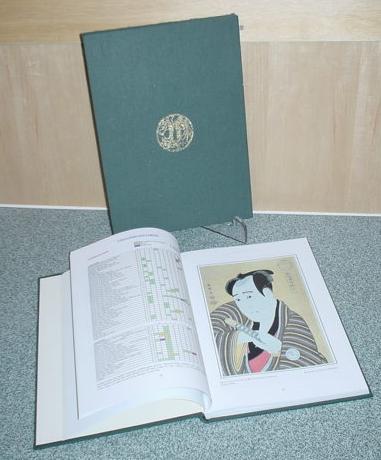 |
The
Hizen Tadayoshi School - Roger Robertshaw
Very good work about the Hizen Tadayoshi school. Good reference for
distinguishing original Tadayoshi signatures from the many fakes that
are available for sale. Book is out of print, but the CD is still
available. Sometimes these books show up on eBay. |
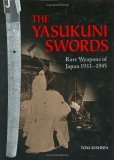  |
The
Yasukuni Swords: Rare Weapons of Japan, 1933-1945: - Kenji Mishina, Tom Kishida
Between 1933 and 1945, 8,100 of these weapons were crafted. They were
forged by only a handful of swordsmiths - an all but extinct breed of
traditional craftsmen. The time-honoured techniques by which they were
forged, as well as the quality of steel used to create them, sets them
apart from other swords produced at the time. Today Yasukuni swords are
highly valued for their beauty and historical significance. This book
not only describes in detail how Yasukuni swords were made, but also
gives guidance to help distinguish them from the 90,000 swords that did
not follow traditional forging practices and were not made of quality
steel - swords which all too frequently appear at auctions for inflated
prices. Among the 150 stunning photographs contained in this book are
those of sword tangs (the part of the blade inside the hilt that
carries important identifying information, such as the smith's
signature, file markings and distinct shapes.
|
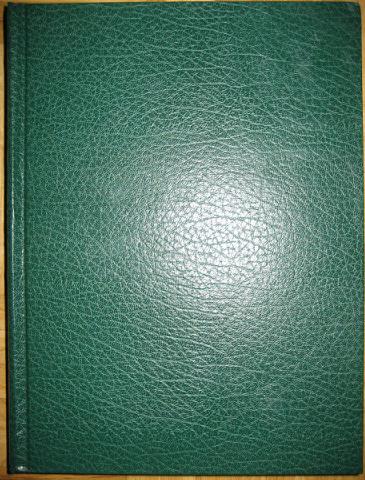 |
Nihon
To Koza Koto - Part I - Volume II Harry AFU Watson
The Nihonto Koza
series is one of the standard sets for the serious japanese sword
collector. AFU Watson has translated the japanese edition for the
non-japanese speaking collector. More information are available
directly from AFU Watson's web site www.afuresearch.com
|
 |
Nihon To Koza Koto .- Part II - Volume III - Harry AFU Watson
|
 |
Nihon
To Koza Koto - Part III - Volume IX Harry AFU Watson
|
 |
Nihon
To Koza Shinshinto - Volume V Harry AFU Watson
|
 |
Nihon
To Koza Shinto - Volume IV Harry AFU Watson
|
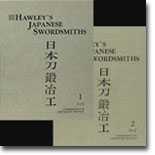 |
Japanese
Swordsmiths W. M. Hawley
A compilation of over 30,000 Japanese Swordsmiths' names - where and when
they worked and how they signed, Kanji and Romanization of names and signatures,
with a relative value rating of their work.
|
  |
Cutting
Edge: Japanese Swords in the British Museum - Victor
Harris
In no other culture has the sword been developed to such a level of
technological excellence and attained such a position of spiritual
importance as in Japan. As a cutting weapon, the fully developed curved
sword of the samurai is extremely effective. Complex traditional
methods of forging, conducted according to the ancient precepts of
reverence and cleanliness of the Shinto religion, impart these
qualities to the swords. Countless varying hues and patterns of the
crystalline structures of steel, which result from special methods of
forging and heat treating, are visible on the surface of a finely
polished blade. In these textures lies an extraordinary and unique
feature of the sword - the steel itself possesses an intrinsic beauty.
The Japanese sword has been appreciated as an art object since its
perfection some time during the tenth century AD. Fine swords have been
more highly prized than lands or riches, those of superior quality
being handed down from generation to generation. In fact, many
well-documented swords, whose blades are signed by their makers,
survive from nearly a thousand years ago. Recognizable features of the
blades of hundreds of schools of sword-making have been punctiliously
recorded, and the study of the sword is a guide to the flow of Japanese
history.
|
  |
One
Hundred Masterpieces from the Collection of Dr. Walter A. Compton:
Japanese Swords, Sword Fittings & Other Accoutrements
|
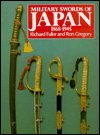  |
Military Swords of Japan
1868 - 1945 - Richard Fuller, Ron Gregory
A reference/historical
guide to the "collectable" market of Japanese military swords. Subjects
covered include rebellion swords, Army, Air Force and home-defence
emergency-issue swords, civil officials' swords, detail on blades,
swordsmiths and markings, and collecting.
|
 |
MINO-TO, Swords &
Swordsmiths of Mino Province - Malcolm E. Cox
8 x
11.5", 268 pp.,
numerous b/w illustrations, paper, Brisbane, 1993.
Providing
a comprehensive information in English on Mino swords, this book is a
compilation of published descriptions and information of Mino blades
and smiths up to the Meiji era Haito Rei (sword-wearing ban).
|
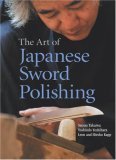  |
The Art of Japanese Sword
Polishing - Setsuo Takaiwa, Yoshindo Yoshihara, Leon Kapp
To understand Japanese
sword polishing is to understand the sword itself. Through the
centuries, the great connoisseurs have been polishers. A swordsmith can
spend much time forging a classic sword, but refining and bringing out
its final shape, colour and texture so that all the details of the
steel and hamon (temper line) are clearly visible is the skill of
another craftsman: the sword polisher. An experienced polisher can
instantly tell provenance, so distinctive is each smith's work and so
vital is such knowledge to the skilled polisher. This is the first book
in English to examine in detail the polisher's techniques: skills that
take 10 years of apprenticeship to master. It illustrates the methods,
materials, and tools used for this process, but its true aim is to
enable the reader to fully appreciate the beauty of a well-crafted
Japanese sword. As readers learn both how the sword polisher enhances
the beauty of the blade and how he handles the problems of coaxing out
its finest qualities, they will come to a deeper understanding of this
fine art and will be able to purchase or collect swords with greater
pleasure and deeper knowledge. It is vital to a true understanding of
the Japanese Sword.
|
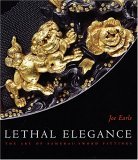  |
Lethal
Elegance: Samurai Sword Fittings - Joe Earle
Published in conjunction with an exhibition at Boston's Museum of Fine
Arts, this volume surveys that institution's extensive collection of
samurai sword fittings. Introductory essays provide an overview of
traditional Japanese swordmaking and decorative metalwork. The
description of each item in the catalog is accompanied by high-quality
color photos
|
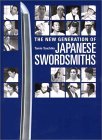  |
The
New Generation of Japanese Swortsmiths - Tamio Tsuchiko
This text explores the art and technique of the contemporary Japanese
swordsmith. It discusses every aspect of sword-making as practised in
Japan today, and offers dialogues between swordsmiths which reveal the
intricate techniques of this craft. Over 100 photographs illustrate the
swords introduced in the text.
|
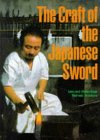  |
The Craft of the Japanese
Sword - Leon Kapp, Yoshindo Yoshihara
From raw steel to tempered
blade, this text presents a visual account of the ancient craft of
swordmaking as practiced in Japan.
|
|
|
|
|
|
|
|
|
|
Japanese
History |
|
|
|
|
|
|
|
|
|
|
|
|
|
|
|
|
|
|
|
|
|
|
|
|

|
|
|
|
|
|
|
|
|
|
|
|
|
|
|
|
|
|
|
|
|
|
|
|
|
|
 |
Das Samuraischwert - John
M. Yumoto
Sehr gutes
Einsteigerwerk. Verständlich zu lesen. Gibt Einblick
in die verschiedenen Schwerter-Perioden und erklärt die
unterschiedlichen Begriffe, die ein japanisches Schwert
characterisieren, inklusive einer kleinen Übersicht
über die am häufigstens zu findenden Kanji-Zeichen
auf japanischen Schwertangeln
|
|
|
|
|
|
|
|
|
|
|
|
|
|
|
|
|
|
|
|
|
|